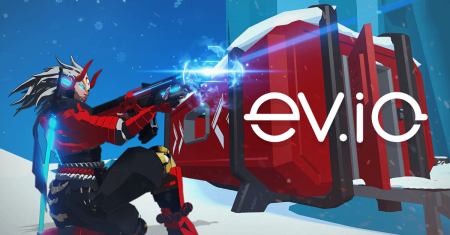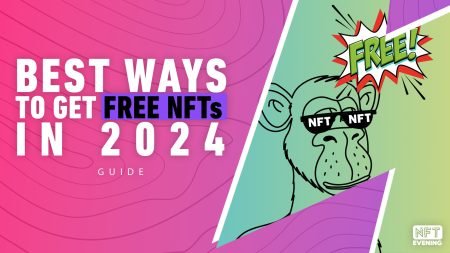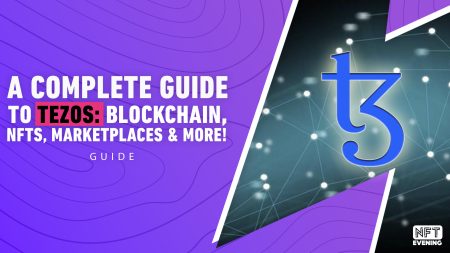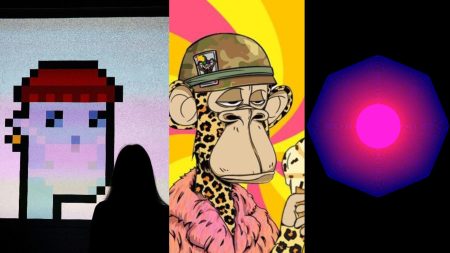Bitcoin Ordinals introduce a unique feature to the Bitcoin network, allowing each satoshi, the smallest Bitcoin unit, to be uniquely identified. This is achieved by attaching data, such as images or text, to these units, transforming them into individual digital collectibles or NFT-like artifacts. Developed by software engineer Casey Rodarmor, this concept utilizes updates in the Bitcoin system, particularly the Segregated Witness update, to enhance blockchain capacity and enable this functionality.
While Bitcoin Ordinals add a new dimension to Bitcoin, enabling the creation of unique digital items and tokens, they also bring challenges. Concerns include potential impacts on transaction fees, network efficiency, and the environmental implications of Bitcoin’s energy use. Despite these considerations, Ordinals represent a significant evolution in Bitcoin’s capabilities, offering novel opportunities in the realm of digital collectibles and cryptocurrency, and have a profound impact on the broader bitcoin ecosystem.

What Are Bitcoin Ordinals?
Bitcoin Ordinals are a recent addition to the Bitcoin network, functioning like unique serial numbers for Bitcoin units (sats). They allow for the attachment of various types of data, such as images or text, to these Bitcoin units. This capability forms the basis for creating Bitcoin artifacts, similar to digital collectibles or NFTs, on the Bitcoin blockchain.
This approach was not part of Bitcoin’s original design; it’s an added layer developed by software engineer Casey Rodarmor, operating on software distinct from Bitcoin’s core network. Bitcoin ordinals use updates in Bitcoin’s system to make each satoshi (the smallest Bitcoin unit) unique.
Before, all satoshis were the same, but now, with these changes, each one can be identified separately. The Segregated Witness update made more space on Bitcoin’s blockchain, allowing for things like images and videos to be attached to each satoshi. Downloading Bitcoin Core is necessary for running a full node to inscribe new Bitcoin Ordinals and synchronizing with the Bitcoin blockchain, adding non-fungible qualities to bitcoin satoshis and providing users with a Bitcoin wallet. This makes Bitcoin more than just money; it can now hold different types of data, making each satoshi special and unique. Through the application of ordinal theory, each Bitcoin satoshi is uniquely numbered and tracked, allowing them to be imbued with individual meanings and traded as distinct entities on the Bitcoin blockchain.
How Do Bitcoin Ordinals Work?
Bitcoin ordinals work by creating unique digital collectibles, known as “artifacts,” on the Bitcoin network. Similar to traditional collectibles like sports cards, these artifacts gain value from factors like their creation date and rarity. They use ordinals to assign a serial number to each item, and inscriptions to attach images or other data through a bitcoin transaction, enabling the creation of Bitcoin-based NFTs that embed data within standard Bitcoin transactions. This process involves mining bitcoin ordinals, which is akin to traditional Bitcoin mining but focuses on the creation of these unique identifiers for digital collectibles.
Beyond collectibles, ordinals are also used for other purposes, such as data storage and domain names, with a notable application being the BRC-20 protocol, which enables the creation of crypto tokens and currencies using ordinals.
How Do Ordinals Work in Blocks?
Each sat’s ID also has info about its life story in Bitcoin’s block history. This includes which Bitcoin “era” it’s from and its spot in its specific block.
- Adding Cool Stuff to Sats – Inscriptions:
- Users can stick interesting things onto sats, like digital art or text, through the process of mining bitcoin ordinals.
- This turns an ordinary sat into something special and collectible.
- Thanks to Bitcoin updates, you can pack in more info than before.
- Making Bitcoin Sats Like NFTs:
- By tracking sats and adding unique stuff through a bitcoin transaction, they become like mini NFTs on Bitcoin.
- But unlike regular NFTs, these sats can still be used like normal Bitcoin.
- Fancy Bitcoin Tokens – BRC-20:
- This is Bitcoin’s way of creating tokens, similar to Ethereum’s method but simpler.
- It involves sticking code onto sats to make them behave like tokens.
- It’s a bit less fancy than Ethereum’s version but still pretty cool for Bitcoin fans.
In short, Ordinals bring a touch of uniqueness and flair to Bitcoin, turning regular sats into something fun and collectible, while BRC-20 introduces a neat way for Bitcoin users to make their own tokens.
What Is The Difference Between NFT and Ordinals?
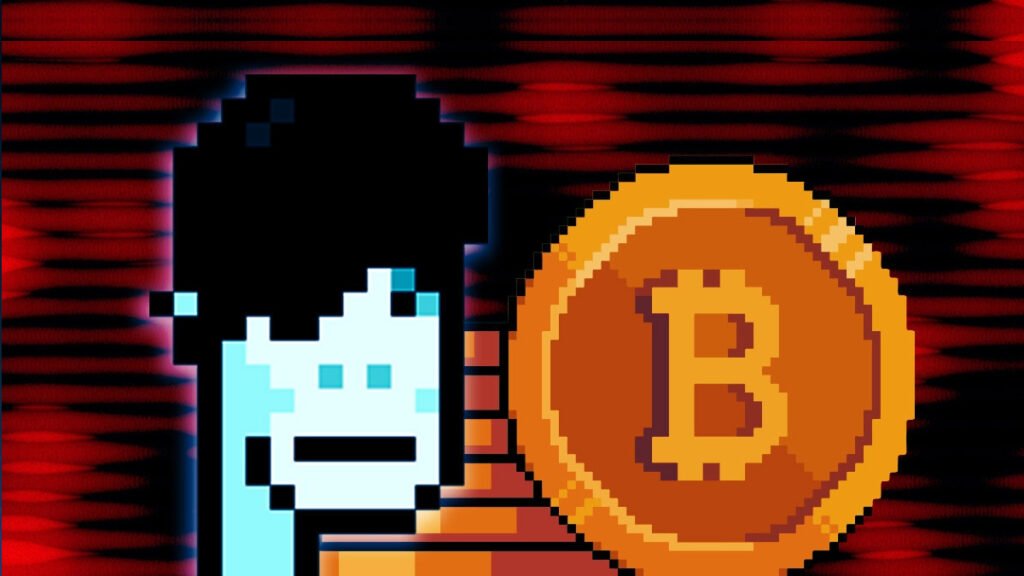
While Bitcoin artifacts and traditional NFTs share similarities in their collectible nature, significant differences exist. Artifacts are directly stored on the Bitcoin blockchain, unlike many Ethereum NFTs which often reside on centralized servers and utilize smart contracts.
Additionally, Bitcoin artifacts currently don’t support creator royalties upon sale, a feature common in Ethereum NFTs. Moreover, Ethereum NFTs are typically employed in broader applications. These include supply chain management and ticketing. Moreover, they allow for larger data storage compared to Bitcoin inscriptions. The Bitcoin community plays a crucial role in shaping the dialogue around these differences, influencing the adoption and perception of Bitcoin Ordinals within the ecosystem.
How Much Are Bitcoin Ordinals Worth?
Think of a Bitcoin ordinal like a unique collectible coin. Ordinarily, a single satoshi (1/100,000,000th of a Bitcoin) is just a tiny, standard part of a Bitcoin, much like a penny is to a dollar. But with the Ordinal Protocol, each satoshi can be “dressed up” with something special, like an image, a piece of text, or even a video. This is akin to turning a regular penny into a collector’s item by adding a unique design.
The value of these customized satoshis, or Bitcoin ordinals, isn’t fixed. It depends on how appealing or rare the inscription is. Just like some collector coins are more sought after than others, some ordinals can be worth more based on what’s inscribed on them. It’s this blend of the tiny monetary value of a satoshi and the potentially high value of its unique inscription that makes Bitcoin ordinals an intriguing concept in the world of digital collectibles and cryptocurrencies.
How Do I Buy & Sell Bitcoin Ordinals?
Buying Ordinal NFTs
- Set Up a Digital Wallet: Choose a digital wallet compatible with the Bitcoin blockchain. Options include web-based, mobile apps, or hardware wallets. A recommended choice is the Xverse wallet.
- Understand Blockchain: Get familiar with blockchain technology, especially Bitcoin’s blockchain. It’s a decentralized ledger recording transactions across many computers.
- Fund Your Wallet: Buy Bitcoin (BTC) from exchanges like Coinbase or Binance and transfer it to your wallet.
- Find a Marketplace: Look for a marketplace that offers Ordinal NFTs, such as MagicEden, and connect your wallet to it.
- Choose Your NFTs: Browse and select Ordinal NFTs based on your interests, considering factors like creator, rarity, and demand.
- Complete the Purchase: Follow the marketplace’s process to buy your chosen NFTs.
- Secure Your NFTs: Store your NFTs safely in your wallet and keep your private keys and recovery phrases secure.
Remember, cryptocurrency investments come with risks, so always do your research and be cautious of market volatility.
Buying Ordinals (ORDI) Token
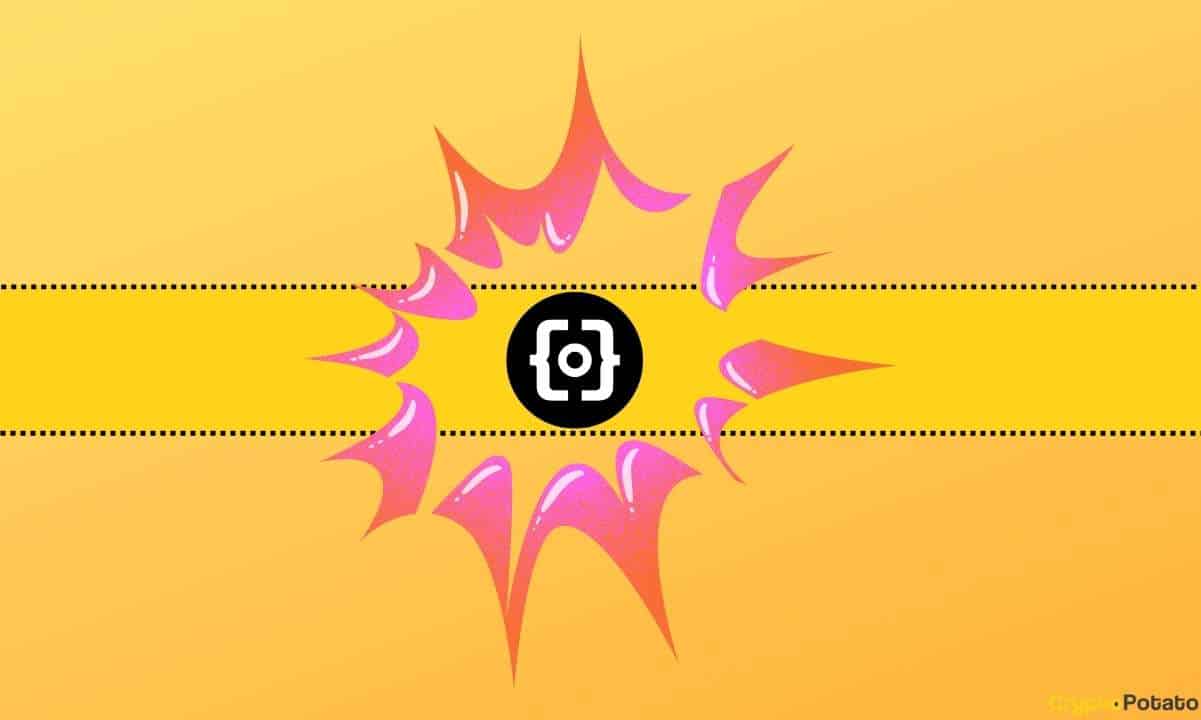
Ordinals (ORDI) is a new cryptocurrency token for the Bitcoin Ordinals protocol. It recently gained attention with a 50% price surge following its listing on Binance. Binance tagged ORDI as an emerging, high-risk project, leading to significant price volatility. The token’s value jumped from $7 to $11, accompanied by a substantial increase in trading volume. ORDI is linked to the Ordinals protocol, which allows embedding data like digital art into Bitcoin transactions. This protocol gained traction with the BRC-20 token standard, leading to a wave of digital artwork and meme tokens on the Bitcoin network.
Here’s a quick step-by-step process to acquire ORDI:
- Check CoinMarketCap: Search for Ordinals to see available purchasing options and applicable currencies. Look for the “Market” section to find market pairs like ORDI/USD.
- Choose a Platform: Research different platforms for their security, reliability, and liquidity before creating an account.
- Make the Purchase: Platforms vary in user-friendliness. Generally, buying with fiat (e.g., USD) is easier than using another crypto. If buying with crypto, first get a compatible wallet, purchase the initial currency, then use it to buy Ordinals. Check for platform guides or seek community help if needed.
Selling Ordinals NFTs
To sell Bitcoin NFTs, specifically Ordinals, on Magic Eden, follow these steps:
- Connect Your Wallet: Use wallets like Xverse, Unisat, or Hiro, and connect it to Magic Eden. Remember, you’ll use two different addresses: one for receiving and storing Digital Artifacts, and another for payments and transaction fees.
- Prepare Your Wallet: Before your first transaction, prepare your wallet on Magic Eden. Click the “Prepare Your Wallet” button and approve the transaction in your wallet. Note that Bitcoin transactions may take some time to process.
- Selling Process: This involves listing your Digital Artifact on Magic Eden, setting a price, and waiting for a buyer. Once a buyer purchases it, the Artifact will be locked from trading until the transaction is confirmed or fails.
- Note on Royalties: Currently, Magic Eden’s platform on Bitcoin doesn’t support creator royalties due to the lack of tools for secure and trustless royalty enforcement in the Ordinals ecosystem.
Remember, the selling process on platforms like Magic Eden may involve additional steps or nuances, so it’s essential to familiarize yourself with their specific guidelines and features.
What Is The Point Of Ordinals? Are They Good For Bitcoin?
The point of Ordinals is to expand Bitcoin’s functionality beyond mere financial transactions. By enabling unique inscriptions on individual satoshis (the smallest Bitcoin units), Ordinals create a new form of digital collectibles, akin to NFTs, on the Bitcoin blockchain. This innovation appeals to those valuing Bitcoin’s security and longevity, transforming it into a platform not just for currency, but for unique digital artifacts, potentially widening Bitcoin’s appeal.
However, this comes with trade-offs. Critics argue that Ordinals can increase transaction fees and slow down the network, as they use up significant block space. They also raise concerns about environmental impact due to Bitcoin’s high energy consumption. Many Bitcoin developers have voiced concerns about the detrimental effects of ordinals on network fees and congestion, leading to a debate within the crypto community. Despite these concerns, there is growing support for Bitcoin ordinals, with a burgeoning ecosystem of marketplaces and tools that facilitate the trading and management of Bitcoin Ordinals, indicating a cautious yet optimistic embrace of this new technology within the NFT market. While the excitement around Ordinals suggests potential for diversifying Bitcoin’s use cases, it’s crucial to weigh these benefits against the potential downsides of network efficiency and environmental impact.
Frequently Asked Questions
Who Made Bitcoin Ordinals?

Bitcoin Ordinals were created by software engineer Casey Rodarmor. He developed the protocol to enable the inscription of unique data, such as images or text, onto individual satoshis, the smallest units of Bitcoin, effectively transforming them into distinct digital artifacts or NFTs on the Bitcoin blockchain.
What Are The Risks Of Bitcoin Ordinals?
- Market Volatility: The value of Ordinal NFTs can fluctuate dramatically, mirroring the inherent volatility in the broader crypto market.
- Scams: As with any emerging technology in the crypto space, there’s a risk of scams. Investors need to be vigilant, conduct thorough research, and use reputable marketplaces.
- Environmental Impact: The creation and trade of Ordinals, like other digital assets on energy-intensive networks, contribute to significant energy consumption, which can be a concern for environmentally conscious investors.
- Network Congestion: Ordinals could potentially lead to increased transaction fees and slower transaction times on the Bitcoin network, as they occupy additional block space.
- Early Technology Phase: Being a new technology, the long-term viability and use cases of Ordinals are still evolving, which presents uncertainties regarding their future development and integration into the broader digital asset ecosystem.
Is Bitcoin Wallet for Ordinals Legit?
The Ordinals Wallet is a specialized, non-custodial wallet and marketplace designed for Bitcoin users. Key features include:
- Bitcoin Focus: Dedicated solely to Bitcoin, making it ideal for Bitcoin enthusiasts and users interested in BTC-based NFTs.
- Enhanced Security: Uses encryption for protecting private keys and leverages the security of the Bitcoin blockchain for added safety and transparency.
- BTC-Based NFT Support: Unique feature enabling users to manage and trade Bitcoin-based NFTs directly within the wallet.
While Ordinals Wallet is a strong choice for Bitcoin-centric users, those seeking a broader range of cryptocurrencies or staking options might prefer wallets like Atomic Wallet. The right choice depends on individual preferences and investment focus.
Most Expensive Bitcoin Ordinal
The highest sale price for a Bitcoin ordinal so far is an Ordinal Punk NFT, selling for 9.5 BTC or around $214,000 to $215,000. This demonstrates the considerable worth attached to such unique digital items on the Bitcoin blockchain.
Other notable sales include the ‘TwelveFold’ collection by Yuga Labs. This inscription, Inscription 364 fetched 3.08 BTC/43.59 ETH, approximately $67,000, in January 2023. Additionally, the Ordinal Punks collection is in high demand. Ordinal Punk 78 had an asking price of 50 BTC/692.66 ETH, about $1,132,500, reflecting the significant market interest in rare Bitcoin NFTs.
Final Thoughts
As Bitcoin Ordinals emerge as a revolutionary move in the NFT space, its impact on the digital asset landscape cannot be underestimated. Leveraging their own technology & recent updates of the Bitcoin blockchain, Ordinals introduce a new standard of security and decentralization. They offer a versatile platform for tokenizing a diverse range of assets, from digital artworks to physical properties. The surge in interest and adoption following the mainnet launch underscores their growing significance. While Bitcoin Ordinals present some advantages over traditional NFTs, enhanced security, it still engages challenges such as higher fees and limited functionality. Nonetheless, their rise heralds a new era of innovation and possibility in the NFT ecosystem.
All investment/financial opinions expressed by NFTevening.com are not recommendations.
This article is educational material.
As always, make your own research prior to making any kind of investment.


